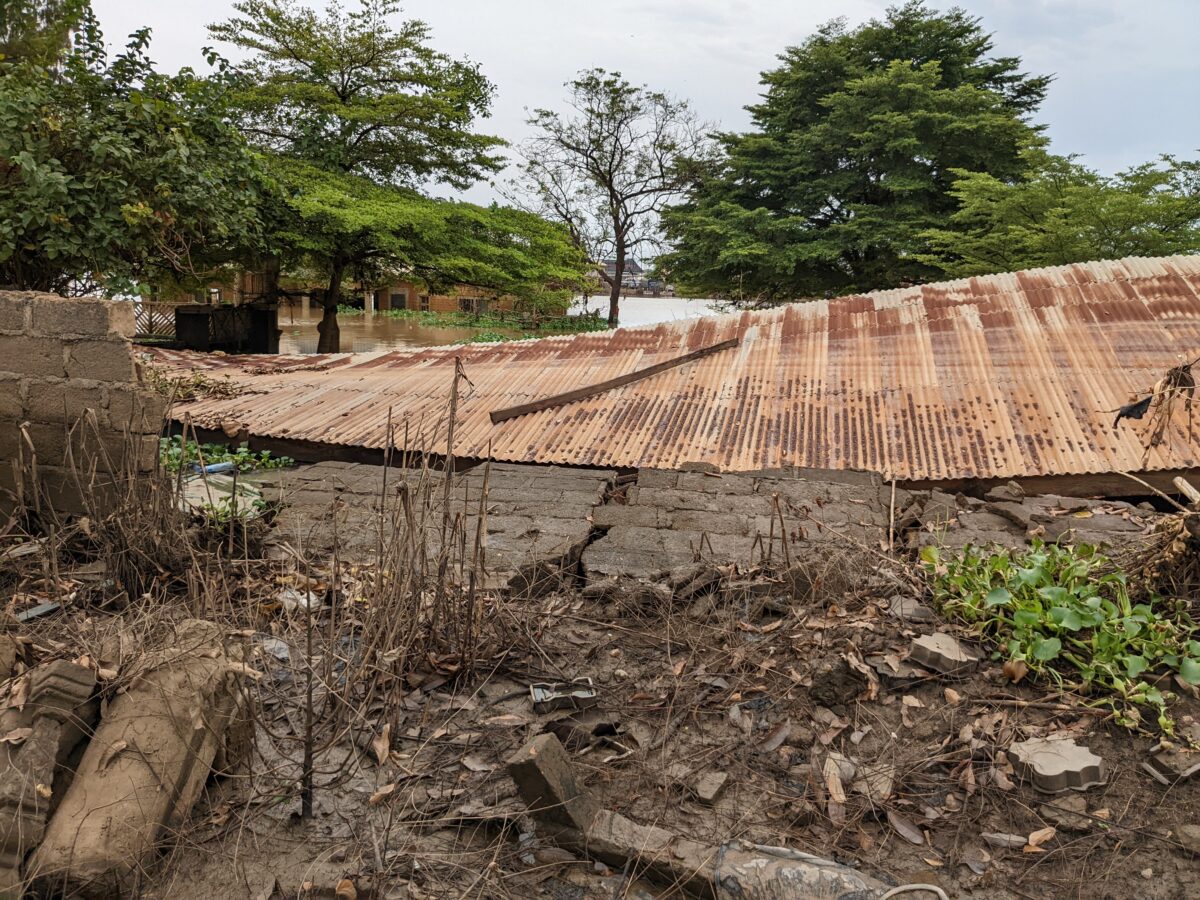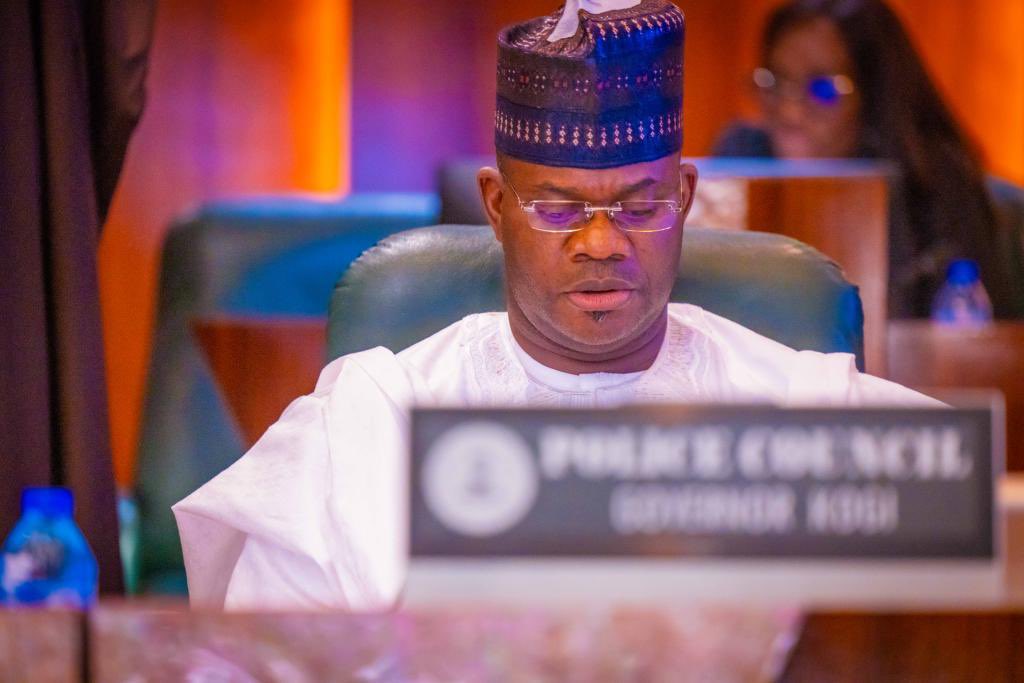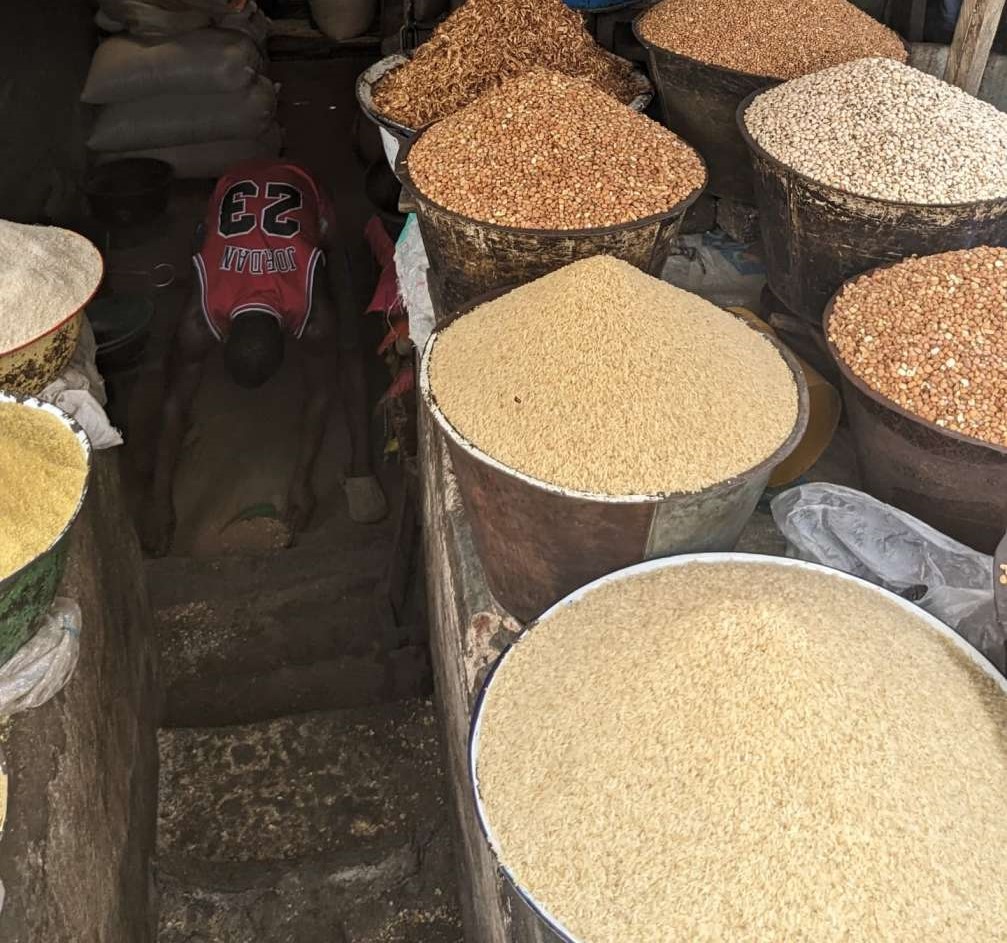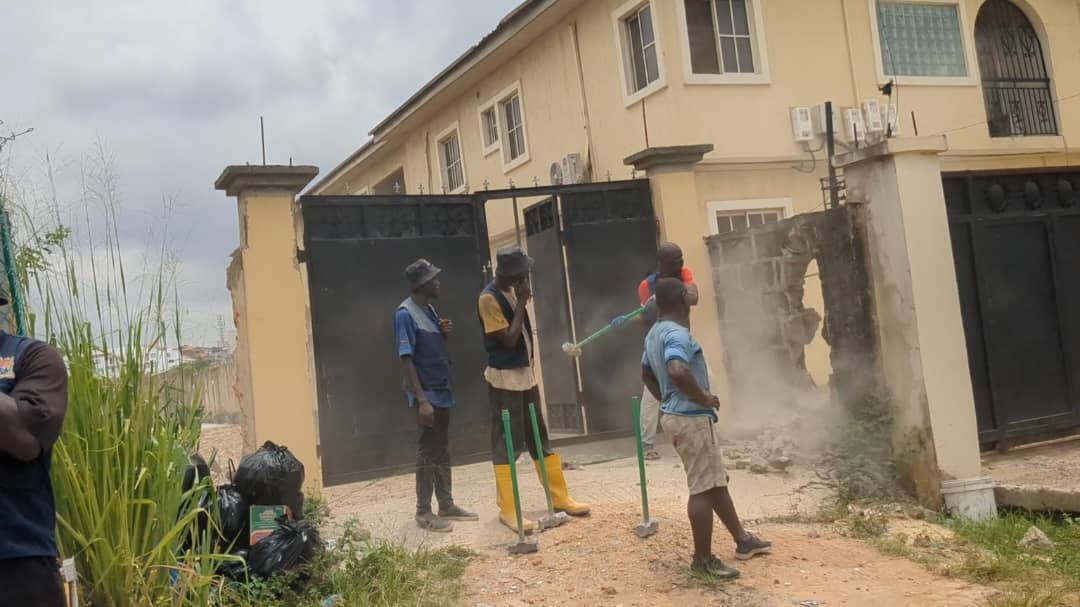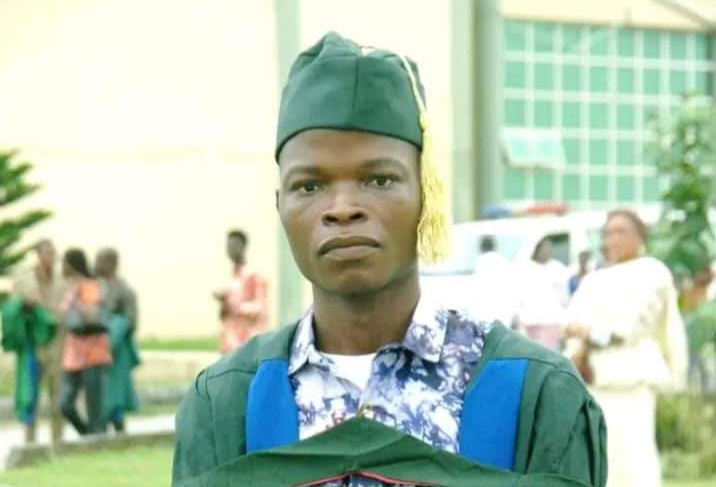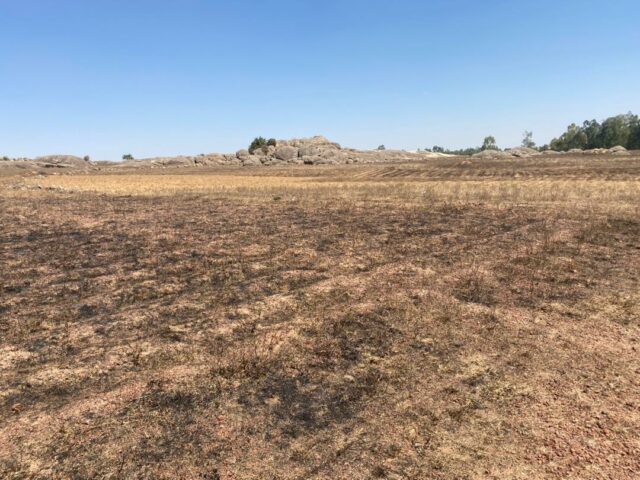This year, Nigeria suffered its most devastating floods in a decade. And despite projections dating back to May and a post-disaster assessment need made after the 2012 floods, the government was unable to buffer the effects. Excessive rainfall in short bursts, Cameroon’s Lagdo dam, climate change, and human anthropogenic activities have all been identified as contributing factors, but between repeatedly and dispassionately reporting that Nigeria’s floods are an annual occurrence and pointing fingers, no one has taken accountability for the humanitarian disaster created by the floods. FIJ’s Tarinipre Francis visited Bayelsa and Kogi states to document the pains of the people who bear the brunt when institutions fail to take responsibility.
FOREWARNED BUT IGNORED
In May, the Nigeria Hydrological Services Agency (NIHSA) issued its 2022 Annual Flood Outlook (AFO), which listed 32 states at high risk of flooding. Bayelsa and Kogi were included: Kogi, the confluence state where the rivers Niger and Benue converge, and Bayelsa, the recipient state of several tributaries that empty into the Atlantic Ocean, which it is bound to by the south. By September 2022, both states had become severely impacted, resulting in a humanitarian crisis.
READ ALSO: PHOTOS: Submerged Buildings, Floating Vehicles. Nigeria’s Ongoing Flooding Disaster
BAYELSA: A RIVERINE PEOPLE OVERRUN BY FLOODS
In Bayelsa, everyone was a flood victim, and every home unoccupied by flood was shelter for its victims. Communities moved to roads and canopies became homes on those roads. The governor, Douye Diri, said over 300 communities in the state were submerged, and all of its local governments affected, resulting in the loss of lives, homes and livelihoods of the people.
At the Alamieyeseigha Camp, an abandoned building owned by the late Diepriye Alamieyeseigha, former governor of Bayelsa State, it was the tarpaulin used to enclose canopies that served as the mattress they rested their heads on at night.
There were about 300 of them whom the flood had evicted from the settlement, now occupying a single canopy set on the road. Some were seated on chairs, others perched on a tree sorting through cans, and most were out on the streets in search of daily bread while it was still day.
MOSQUITO BITES, MALARIA
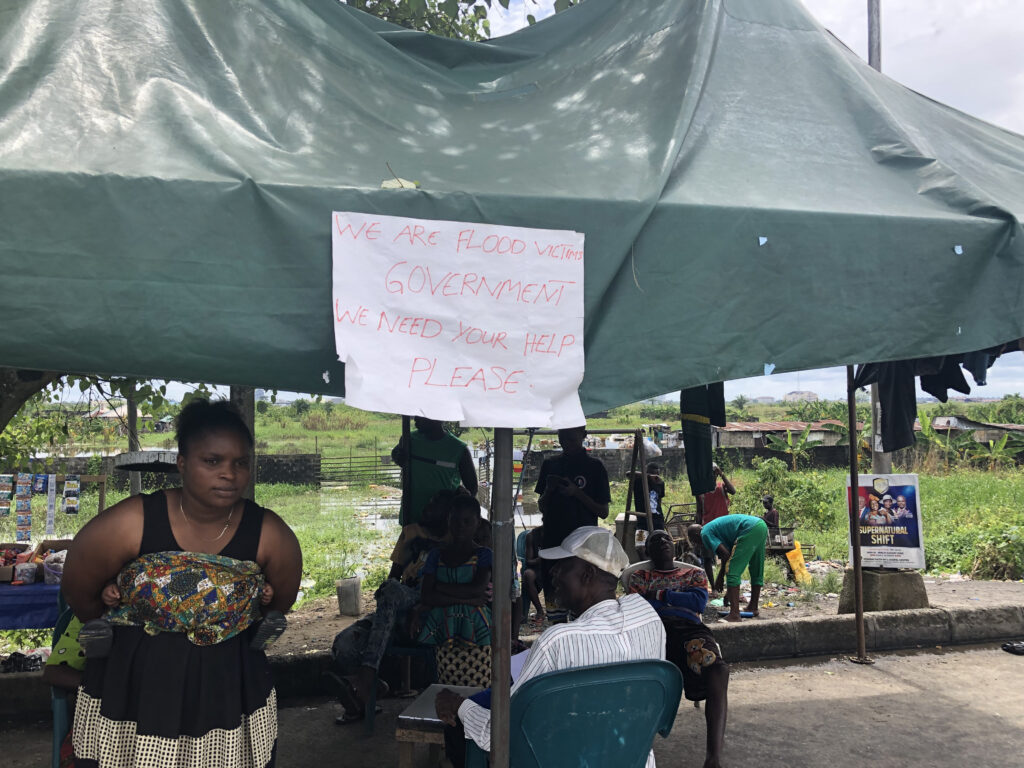
Each night, they removed the green tarpaulin that covered the canopy and spread it on the ground to sleep. They didn’t have mosquito nets, so they contended with mosquito bites every night.
Abass Umar, a camp resident, said he had been treated for malaria three times in two weeks, with the last episode being so severe that he was put on a drip.
When I inquired about their sustenance and if they had received any form of support, Ruth Ajoko, the camp’s leader, said that they had not received any food or aid.
“Nobody don visit, nobody don come to drop anything. But every time we dey see government, dem dey come pass every day, governor go pass, but nothing [sic],” she said.
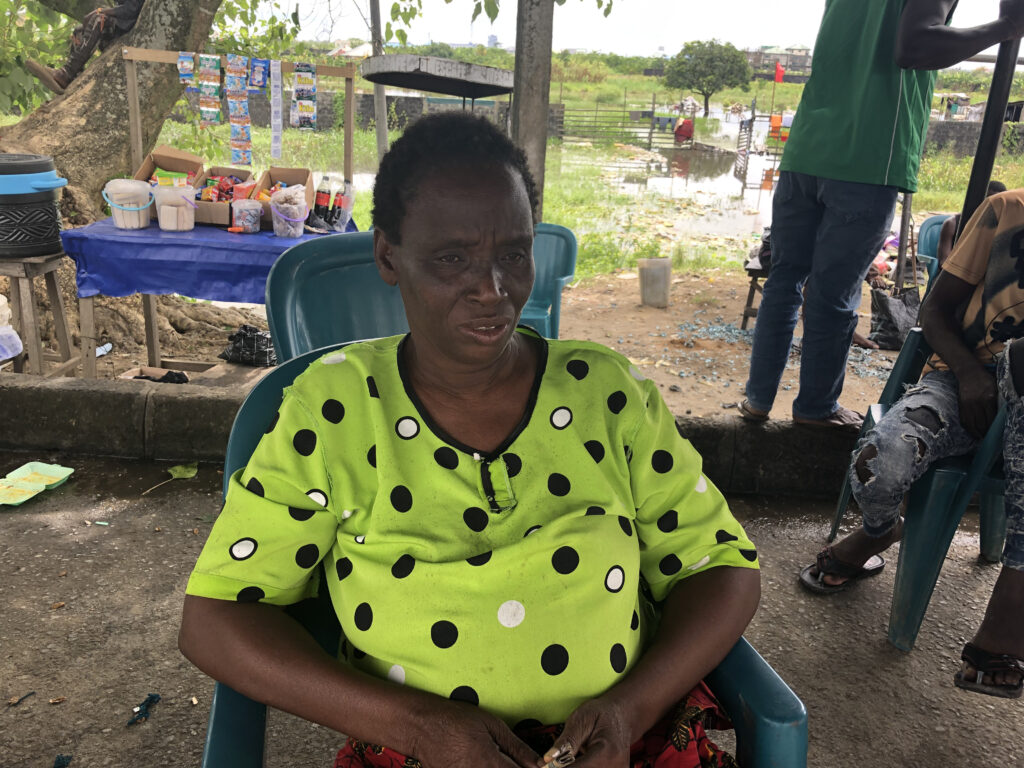
Throughout Bayelsa, the flood was present, and even in areas where it was not physically present, it was palpable, looming in the conversations in bars, restaurants and in vehicles during commute. It was a common and unifying language among the people.
When the water first stopped rising, everyone spoke about it with a glint of hope. Still, they tried to arrest their expectations. They told one another the floods were receding, and in the same breath, asked if their counterparts could confirm that it was true, as if not wanting to raise false hopes.
WHEN CLASSROOMS BECAME BEDROOMS
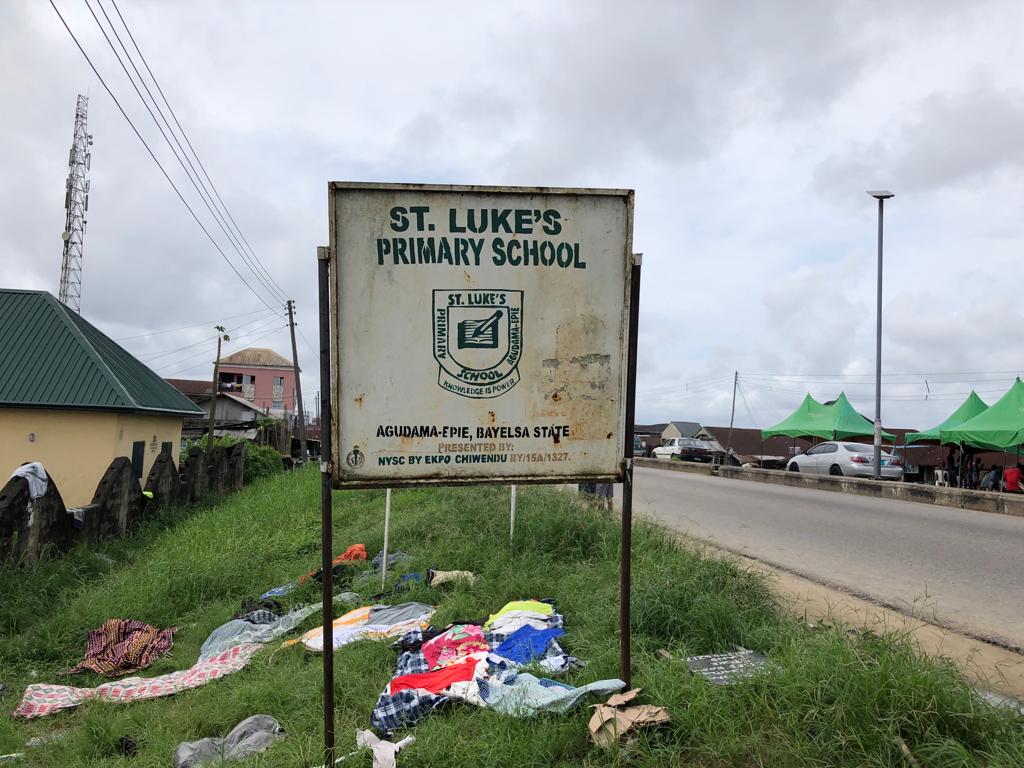
On October 21, FIJ visited Saint Luke’s Primary School in Agudama-Epie community. Following the floods, the governor had asked schools to shut down for six weeks. In the absence of learning activities, a number of the schools were turned into camps for internally displaced persons (IDPs). There were women, men, and children tussling to get in line to get water from the Federal Fire Service. They had come with a tank of water to supply the camp.
Igali Felaye, the State Commander of the Federal Fire Service, Bayelsa State Command, who was present at the camp, stated that the they were providing water to mini IDP camps in Yenagoa, the state’s capital, as a result of the pollution of water sources in the state.
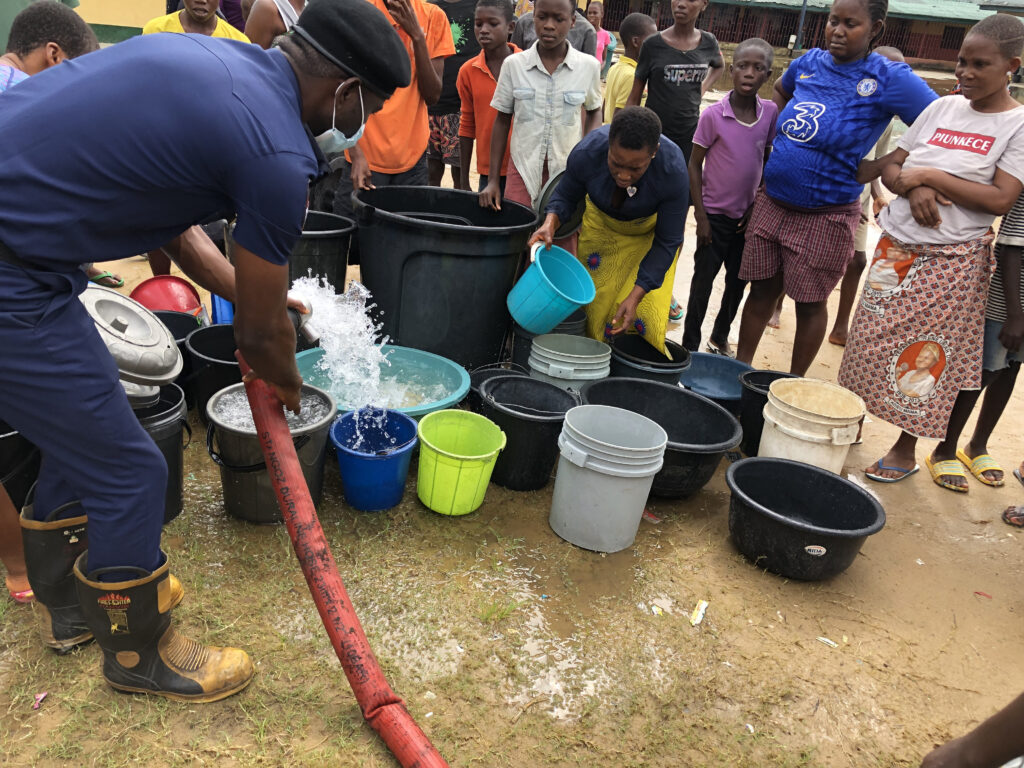
In the camp, a total of 10 classrooms had been converted into rooms, each accommodating five families. The total number of people sleeping in the rooms ranged from 15 to 20, each family consisting of at least two to three children.
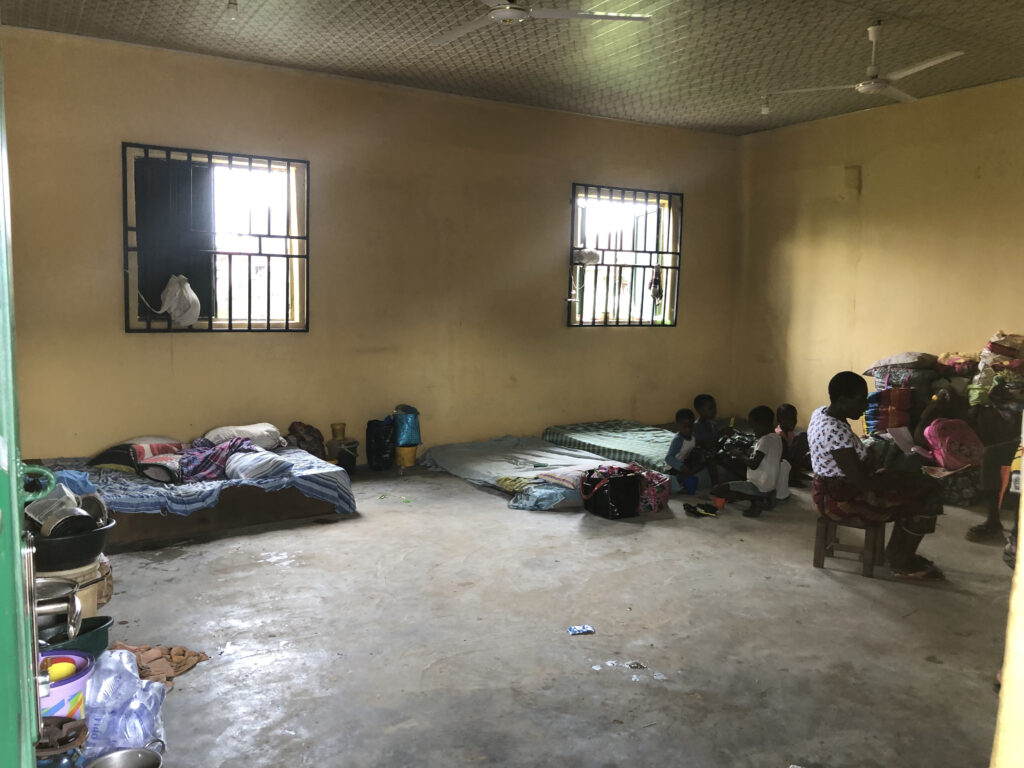
The camp residents complained of insufficient food. Access to food was always a struggle, as internally displaced people living outside of the camp in canopies by the roadside raced to grab food brought for them. Even though different non-governmental organisations and individual donors often came to give them food, it was never sufficient and did not get to everybody.
At the bar on Saturday morning, October 22, ‘Engineer Wale’, a cheery, outgoing fellow, told me he had run away from his home in Agudama-Epie as it had been taken by the flood, and now lived in Green Villa. He had not been back to his house since he left. Asked him about his properties, he said that he had raised his furniture, but due to the magnitude of the flood, they may have been submerged. On his plans for the aftermath, he said, with a resigned look, “anything wey spoil don spoil”.
Engineer Wales* abound throughout the state, having fled their houses and abandoned their belongings to seek refuge on canopy-laden streets, IDP camps, and the homes of relatives and friends that were unaffected by the floods.
LIVE CHICKEN FOR N500
On October 20, Innocent Alu, owner of a Teks Global Integrated Farm in Onuebum, Bayelsa State, sought help on Twitter after losing 3,897 birds the previous day due to flooding.
READ ALSO: Displacement, Kidnapping, Hunger… Rivers Community Cries Out for Help After Flooding
Desperate to salvage what was left of his poultry, Alu announced the sale of each of his remaining birds for as little as N500 and N1000. Notwithstanding the floods, consumers came in droves to buy live chicken. By October 22, all the surviving birds had been sold.
The farm’s manager, who simply identified himself as Oladipupo, said they lost 10,000 birds in four days. Although the flood did not get into the pen, it encircled the facility.
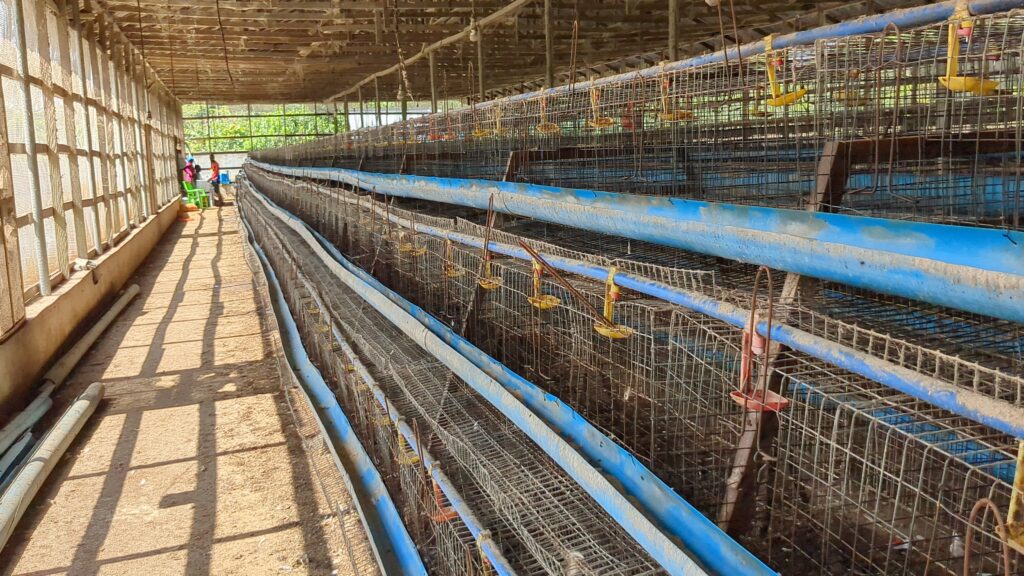
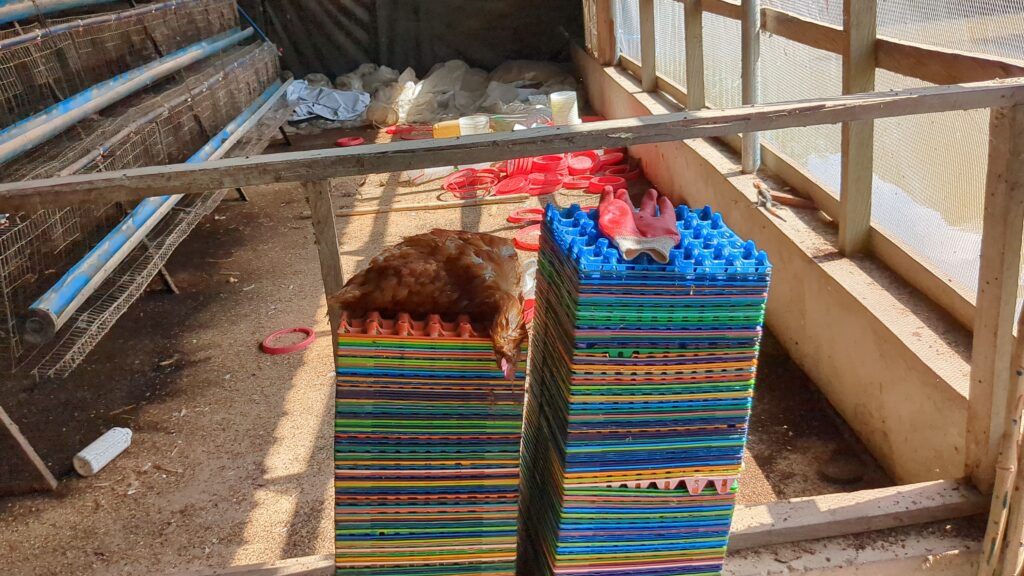
Oladipupo stated that they were unaware of the flood forecast and had made no preparations for it, especially as they had never been hit by flooding before, not even during the 2012 floods. He said that birds that would ordinarily sell for N3,000 were instead sold for N500 and N1000. He put their losses at over N30 million.
All of their workers were forced to relocate to the farm after being first evicted by the flood from the lodge they lived in. The flood, according to Oladipupo, brought with it both waterborne and airborne infections.
With his about 12 staff suddenly uprooted and uncertain of their next steps, all he said was “when there is falling, we will stand again [sic]” and “we believe that with God all things are possible.”
CUT OFF FROM THE REST OF THE COUNTRY: JOURNEYING IN AND OUT OF BAYELSA
At the peak of the floods, when it rammed into the state, it severed both sides of the east-west road leading to it. To get to Bayelsa from Delta State on the east-west road, one had to take a bus or minivan to Erenni, the first part of the road decimated by the flood in Delta. Vehicles ended their trip before the water’s edge. Originally a two-lane road, one of the lanes served as a dock where canoes were moored, with paddlers offering passengers a ride to the next stretch for N500. The other lane, equally flooded, was less steep, and people who could not afford the N500 canoe fare walked through, water surpassing their knees, reaching their waists in some areas, and currents stronger in some places than others.
Erenni was the shortest distance by canoe on the road. There was one more at Ume, Delta State. It took around 20 minutes to get to the other side of the road using a speed boat from there.
Unlike in Erenni, in Ume, the canoes did not go straight on the road; they followed an inside path because the current on the major route that got broken was too strong. The inside route lead through the community, and it was a ghost town. Houses were completely submerged in water, and there was no sign of anybody — just commuters passing through in canoes. It is hard to believe Ume community was inhabited by people just a month before my visit.
To drop off passengers, the boat makes its way back to the major route and anchors at the median kerb, where people have to climb onto the other lane. Bikes, cars and minivan drivers flock around passengers to take them to Yenagoa. Before the flood, transportation to Ughelli cost around N1,500, but between shuttle canoes and vehicles, the fare had increased to N3,500.
From then on, the road is motorable, even though vehicles have to drive through water. It is not so much to stop them from passing through. But instead of going through the toll gate at Igbogene, which is the usual route to Yenagoa when coming in from Delta State, the vehicle continues to Mbiama, as if going to Rivers State, before making a turn through the second toll gate.
As it was discovered later, the road leading to the tollgate in Igbogene community had been overrun by the floods, and there was no entry through that route.
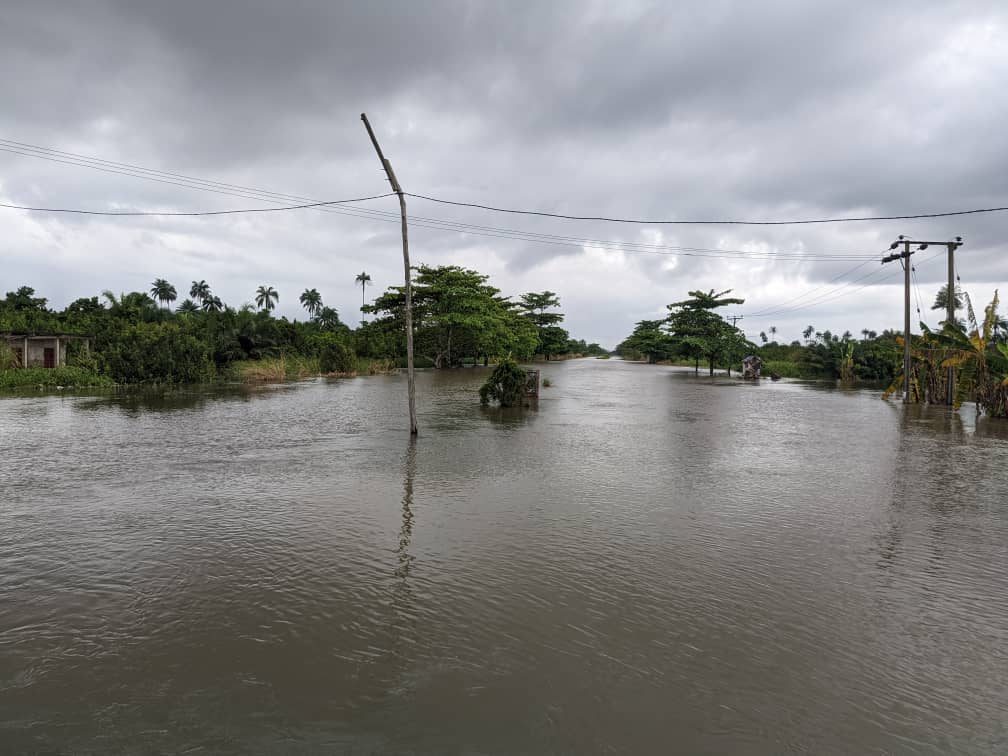
Unlike in Erenni and Ume, in Okogbe, Rivers State, and the areas leading to it, the current was so strong that once, when the bike I boarded with my guide stopped abruptly while riding in the waters and we were asked to come down, the water immediately took one of my guide’s sandals, and there was no way we could retrieve it because we had to stand firm to avoid being swept away by the water. It was through this water that people who needed to cross to Ahoda walked for hours. And this was only the beginning of the dreary journey.
Reaching the point where we could no longer proceed by bike, we learned from those continuing the journey by foot that further ahead, the road was so badly severed, you either paddled across or walked with the aid of a rope tied on both ends of the divide to avoid falling over. Going from Okogbe to Ahoda was akin to courting death, yet many were left with no options but to ply the road to get on the other side.
We tried to wait for a tipper to take us on the risky adventure, but in the 40 minutes we stood waiting, only four tippers passed through, brimming with passengers crossing over to Ahoada with no room for more.
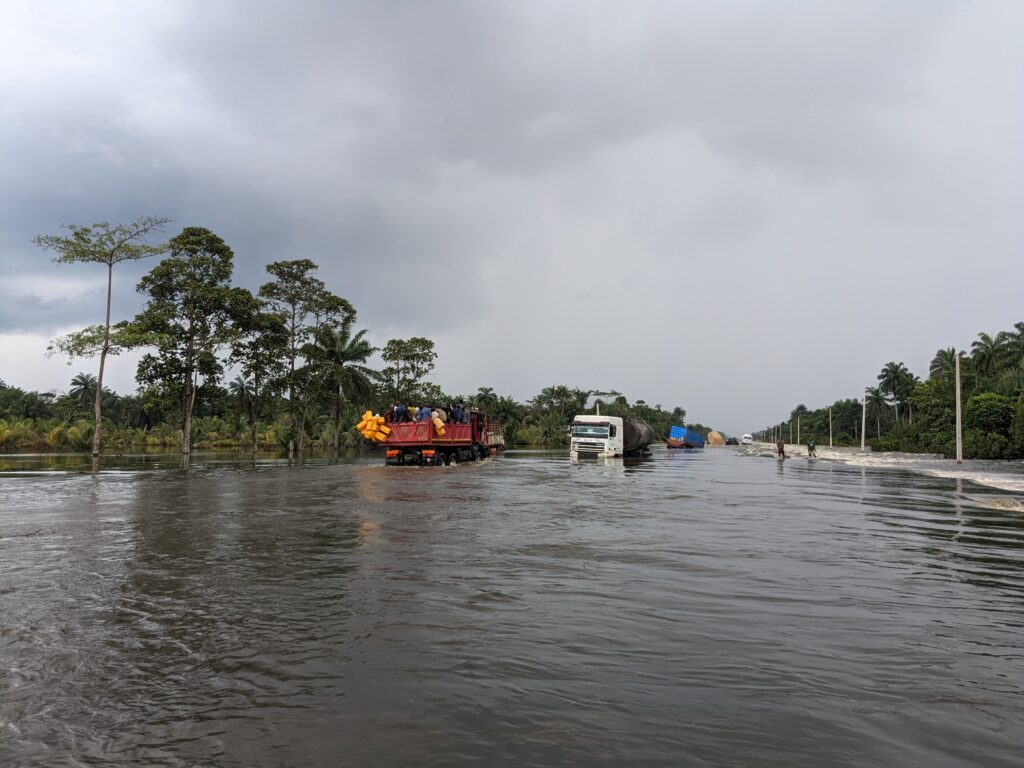
SCARCITY, INFLATION ROCK BAYELSA
Being cut off on both sides of the east-west road prevented access to supplies from outside the state. Fuel was in short supply, and the only choice was to buy it on the black market, where costs reached N1,000 per litre and gas retailed for N1,000 per kilogramme in the capital and N1,500 in other areas. Lack of access to highways caused the cost of living to soar, and everything became a method of generating money. To board a tipper, you could either climb in yourself or hire a ladder for N1,000.

As a result of the floods, the transport system in Bayelsa had become dynamic, a hybrid of road and water transport on paths that were once motorable and accessible only by road. To reach their destinations, people now alternated between tricycles and canoes, fares doubled, tripled, and the time spent commuting extended by twice or thrice the normal time.
IN OTUOKE, STUDENTS ARE RETURNING TO LOST DOCUMENTS AND DAMAGED PROPERTIES
Just a stone throw from the poultry at Onuebuem, the road to Otuoke sinks into water, and boats anchor waiting to transport passengers from Onuebum to Otuoke. The canoe ride is about 40 minutes.
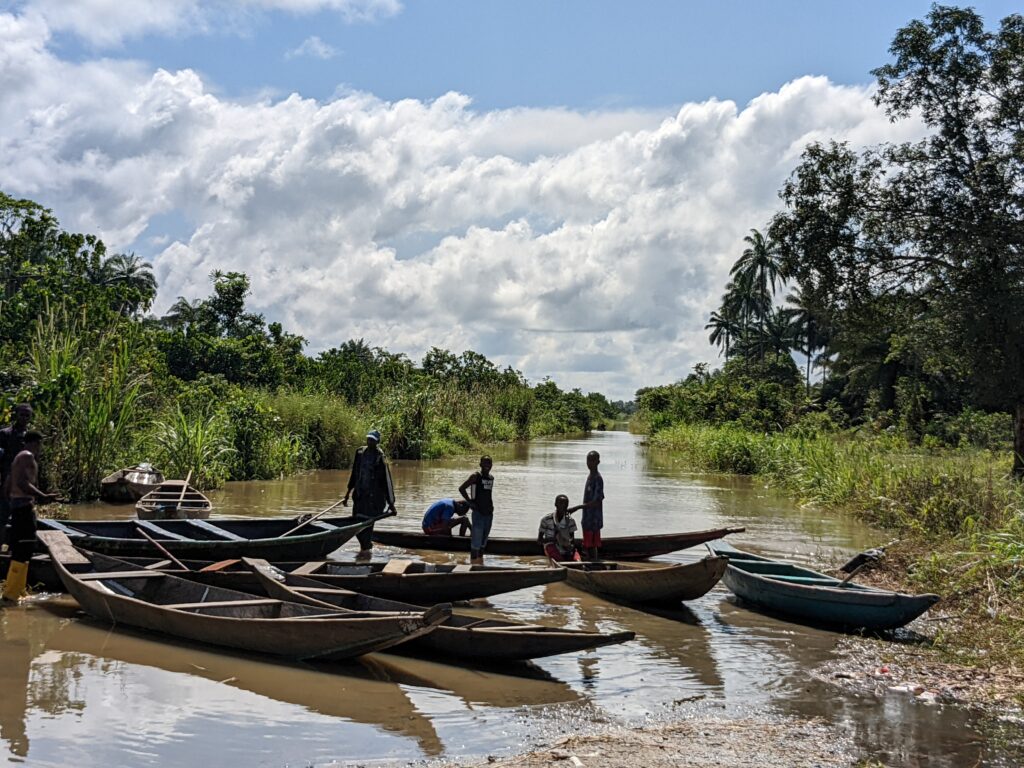
In Otuoke, houses were submerged, and on the parts of the road where the floods had not taken over, villagers sprawled cassava, processing what was left of their harvests. Further into the community, canopies had been put up on the roads unoccupied by the floods, with the villagers now residing on them after having relocated their shops, markets, and properties to the road.
Otuoke is home of former president, Goodluck Jonathan, and host community of the Federal University of Otuoke (FUO). The floods sunk most of the community including its federal medical centre. The university being spared, became occupied by displaced persons.
But it wasn’t just villagers who were impacted by the floods. In Otuoke, students were also greatly affected. Prior to the floods, the Academic Staff Union of Universities (ASUU) had begun a strike that prompted students to return home. Many of those from FUO left their properties behind, and were unable to return to take them to safety before the flood overtook their properties and cut Bayelsa off from the rest of the country.
At the University’s student union government (SUG) block, we found about six students seated outside. Chukwuma Desmond Kosisochukwu, the public relations officer of the SUG, said that they sought approval from the school administration to open up their offices for students who had been displaced, and other parts of the school for indigenes also displaced.
Kosisochukwu, along with other students and members of the union still in town, formed arrangements with students away from campus, and unable to come pack up their properties before the flood where those on ground went to their houses, broke their padlocks, raised their properties, and secured them with new padlocks. This was done for plenty of students; still, some students are reporting the loss of their documents to the flood, Kosisochukwu being one of them.


But Otuoke is not the only student community suffering. The road to Amassoma community, home of the state’s university, first cuts off just after the state’s airport. The water was violent in its movement, the ruptured road connected like it was originally a water way, not a road.


This isn’t the first time the road to Amassoma would be ruptured. In 2012, the road was broken up by the floods. A decade later and there is a reoccurrence, this time breaking off the road in three parts.
Unlike in Otuoke, where the university was unaffected, in Amassoma, the Niger Delta University was overrun by the flood, above knee-length in some areas within the school, and nets tied along its roads, now water bodies.
Outside of the school, the water begins a few metres from the school’s gate, on the road leading to the community secondary school and its market, situated by the river bank. On the roads once transversed by bikes and cars were canoes, and to get to the other part of the university, it’s College of Health Science, one had to ride in a canoe.
On the other road leading into the community, canopies had been set up, filled up with people displaced; some others, whose homes although unaffected, stay at the tents all day and only visit their home to lay their head at night because they are surrounded by water and are unable to access anything.
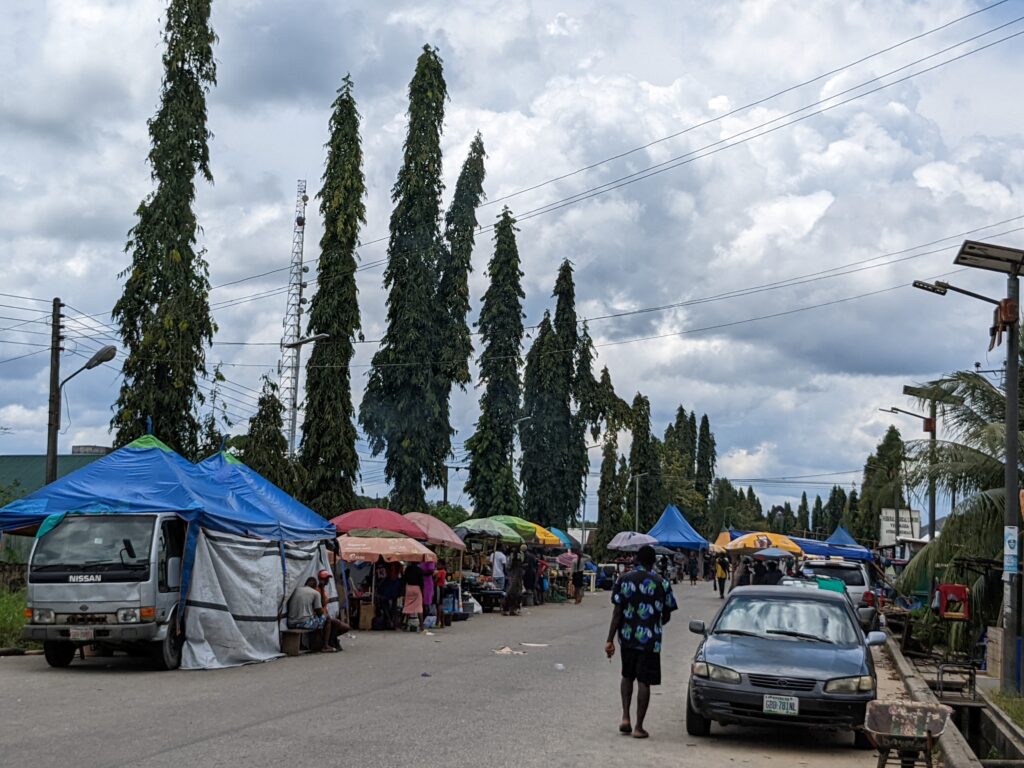
LOKOJA RESIDENTS ARE RETURNING TO BROKEN HOMES
When I arrived Lokoja, Kogi’s capital, on October 25, the floods had reduced greatly. The once submerged Abuja-Korton-Karfe-Lokoja road was now visible, and vehicles journeyed on dried ground from Abuja through to Lokoja. A few weeks ago, the road had been submerged, leaving many motorists stranded.
Even as it receded, the mark of the flood was unmistakable and indelible, a reminder of its ominousness, and to the people, the magnitude of the disaster they suffered- rusty roofs, visible lined markings, stained walls, fallen fences, broken windows, silts, and a general dullness of atmosphere
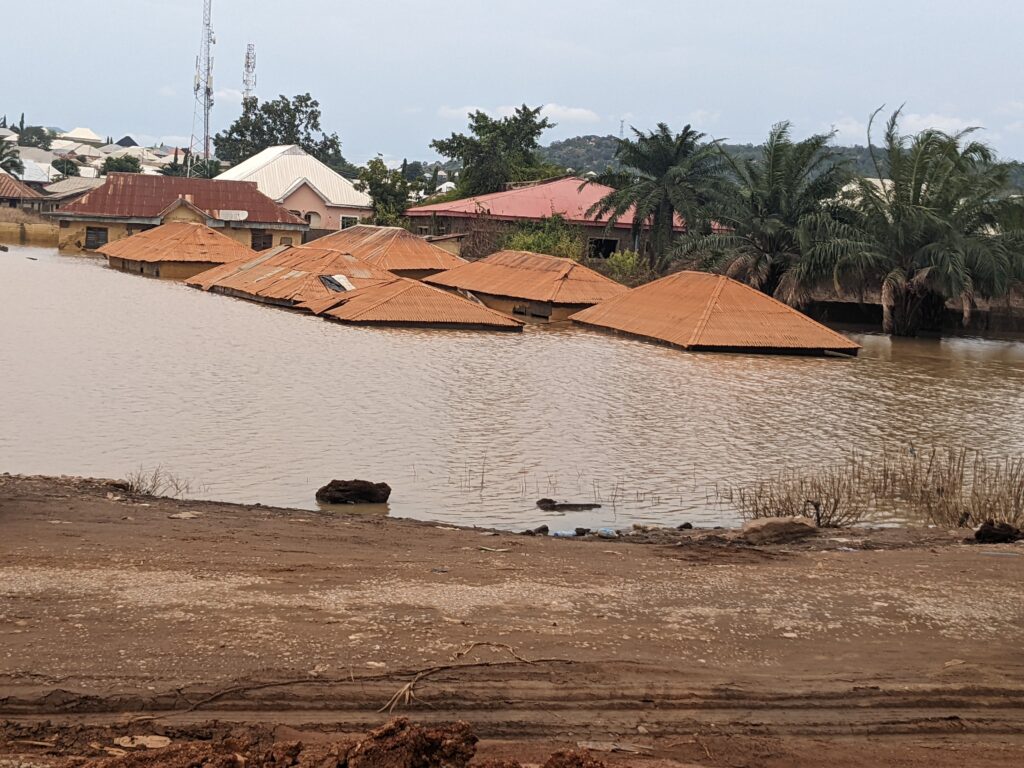
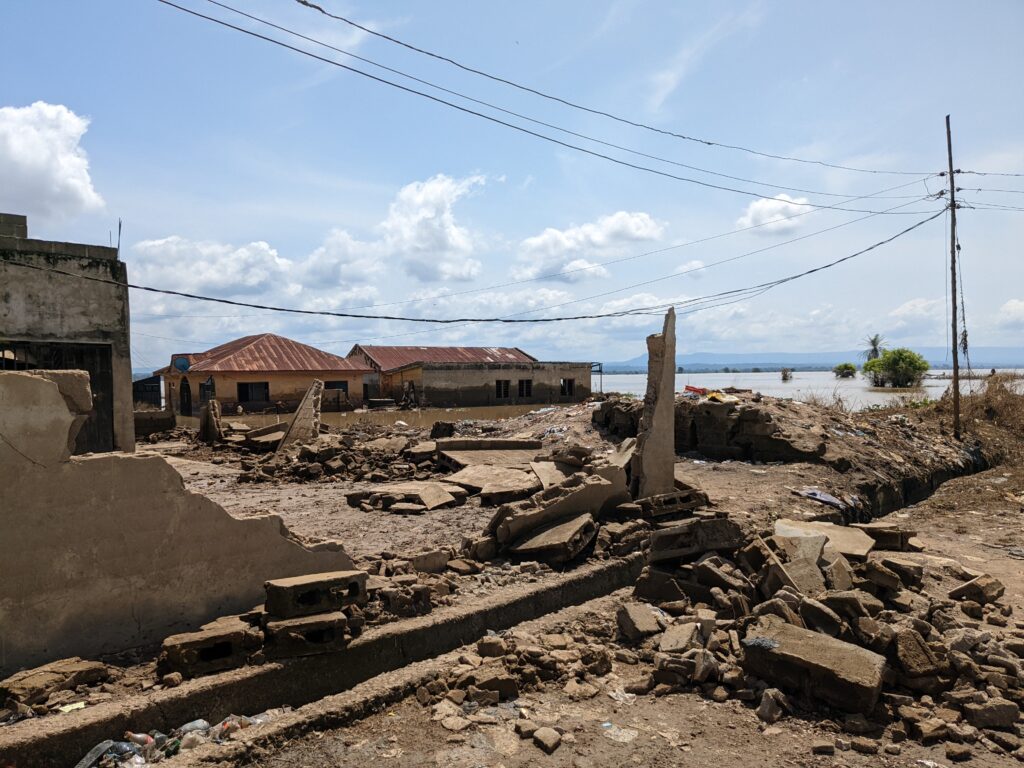
Around the state’s capital, life was beginning to crawl in again; the streets were filling up gradually, but not as homes for displaced persons, for businesses making their way back.
A common theme around the communities was people moving backwards towards the homes they had once moved forward away from as the floods inched closer, taking the familiar away from them several stretches at a time.
GANAJA COMMUNITY IS WASHING AWAY THE GHOSTS OF THE FLOODS
Most of the city on the road to Ganaja seemed like a statewide sanitation had been called. Everyone in their nook, wielding brooms to wash off the ghost of the floods.
At the LGEA Primary School, Ganaja, pupils were washing their classrooms and moving furniture. It had been three days since they began cleaning.

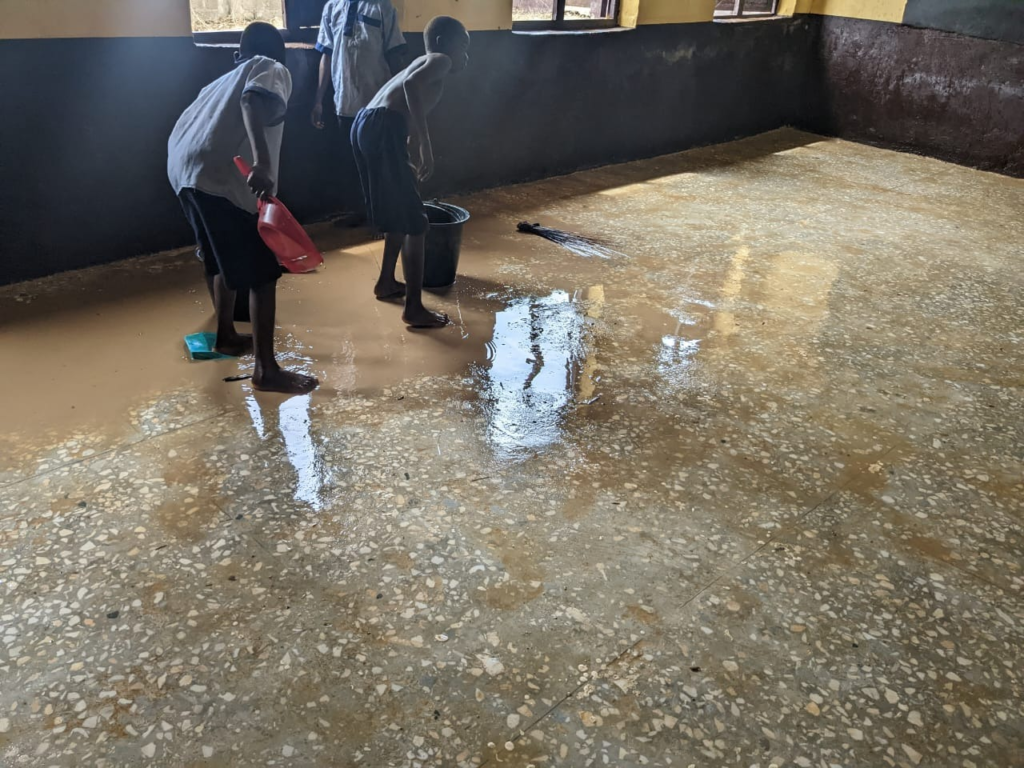
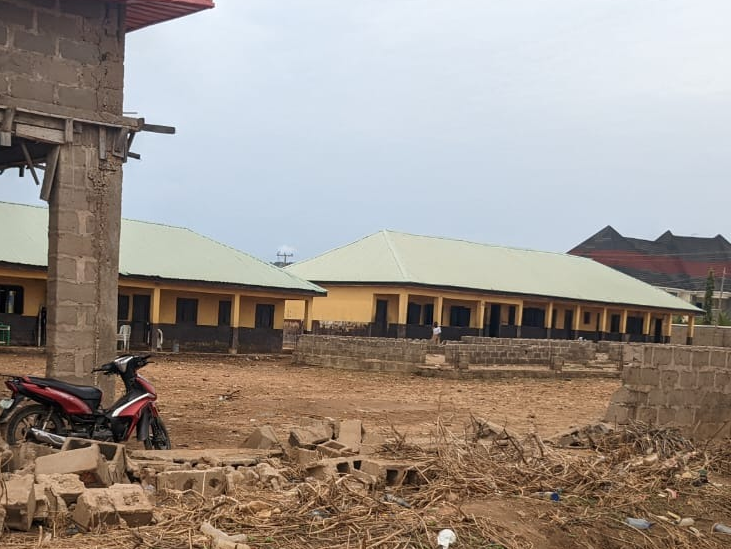
They were being supervised by their teacher, who later led us to Funmi Duze, the headmistress of the school. Duze told FIJ that the floods began before they resumed, and by the third day of resumption, they couldn’t access the school grounds again. It had taken over the premises. They had to move the school’s properties to safety, using a boat. The flood had destroyed several of the school’s facilities, pushed their fence, and put them behind schedule on their academic calendar, since it was now the fifth week from the official resumption date.
Duze said she contacted a few young men to help clean the school premises, but they charged her N30,000 and she could not afford it, so she has left it for a later date. Despite being a government school, no assistance had been provided by the government, so she purchased cleaning equipment with personal funds, and incorporated the pupils into cleaning the school.

The road to Ganaja community was not in great condition. “The state government had left it in its bad state because it is a federal road. It is just a pity,” Sunday Olorunmo, my fixer, tells me.
Like many others, Olorunmo and I trekked past the area, down to the waterside in Ganaja community, leaving our ride behind. Ganaja was one of the affected communities in Lokoja local government area, a largely fishing community near the bank of the River Niger, and many of its inhabitants were driven by the floods.
Near the river bank was where we met David Brialade Ebareotu and his family. The water had reduced significantly in their home. It started at the fence of the second building on the road leading to the gate of their home. We first went in by foot, but as we proceeded, the water got deeper, and the rest of his family, now confirming that I was willing to enter the water to see their living conditions advised that we proceed by boat. It was on the boat ride he told me his name. They were Ijaws from the Ekeremor Local Government Area in Bayelsa State, but he was born and raised in Kogi. His parents too had spent their 50 years in Kogi, although, still connected to their indigenous community in Bayelsa State.
When I asked where they moved after being evicted by the flood, he said they had been sleeping outside since the flood began, motioning his hands forward from where I met him and his family.
“Look, that is where we sleep, and cook,” he said, pointing at the firewood stove placed forward from where we stood. As the flood inched closer, they moved further away from their home to higher ground, and it was only recently, as the floods had begun receding, that they had begun moving backward to their home.
This was not the first time they would experience flooding, although it was the first time it reached this magnitude. But Ebareotu said he remembered experiencing floods annually since 2012 and that although the area is often televised and they have been visited by the government and Red Cross, no measures had been taken. He doesn’t believe there is any government in Nigeria. There was a calm in the way he talked about the floods, unfazed by it, someone who had stifled all hopes of a saviour and come to accept his faith. He doesn’t care for the government, expects nothing of them, and believes that they are on their own.
IN ADANKOLO COMMUNITY, RESIDENTS WRITE THEIR NAMES FOR GOVERNMENT SEVERAL TIMES BUT RECEIVE NO RELIEF
Adankolo looked like a ghost town: empty homes, roads packed with dirt brought by the floods, now greatly receded, deafening quiet. Community members form a line to write their information for people who they later told me were sent by the government. Community members said it was not the first time they would write down their names for government officials. Several times, they had been asked to write down their names for relief. But they received nothing on each occasion.
This came as a surprise, as Adankolo community was host to St Luke’s school, used as a camp for Internally Displaced Persons, where the Nigerian National Emergency Management Agency (NEMA) and Kogi State Emergency Management Agency visited with relief materials.
Emmanuel Igebedima, a native of Anambra State, said it was the first time he was coming into his house since the flood began. The flood had taken over his house, pushing down his fence, leaving him with so many repairs.
He said he was lucky to have found a way to move his properties before the flood became dastardly. He had resided in Kogi since 2013, now raising a family in Adankolo community, having built his own house. He tells me he is not starving, and food is not what they need.
“Government has to sympathize with us, help us, to know how we go do for this community,” he said.
“We have food, we have mattress. In some other countries, developed countries, government can evacuate people and build houses for them in other places. All those are the things we need government to do for this community. No be to give us rice and mattress.“
The general sentiment of the people was one of disappointment. They believe their government doesn’t care. And so when we visited Adamu’s (not his real name) farm, he refused to speak with us, not even after we told him that our goal was to amplify their need for help and get the necessary agencies to come to their aid. He spoke in Hausa, telling us that they do not need any help from the government and are sufficient, citing that if nothing had been done in other years, why should they hold on to hopes of a turnaround this time? This was a man who had made peace with being in a society where government aid was largely inaccessible for the common man and believed that each man had to fend for himself.
HOW NOT TO TALK WITH NIGERIANS ABOUT FLOODS: ZERO ACCOUNTABILITY AND BLAMEGAMES

In the kickoff of the 2022 United Nations Climate Change Conference (COP 22) in Egypt, Nigeria’s president, Muhammadu Buhari, released an opinion, ‘How not to talk with Africa about climate change,’ detailing the West’s ‘hypocrisy’ in dealing with climate change while also, for the first time, personally expressing almost an annoyance at the suffering of Nigerians because of the floods.
But while the president was very forthright with the West about climate change, his administration back home had failed to be proactive in its flood preparations and resorted to passing the buck between its federal, state, and local tiers.
On September 14, Clement Nze, director general of NIHSA, wrote to Cameroonian authorities about the release of water from its Lagdo dam after detecting a rapid increase in Nigeria’s waters and was informed that they had opened the dam the previous day. Cameron was again, without first alerting Nigeria, reneging on their 2016 agreement. But how much forewarning would Nigeria need to be able to sufficiently buffer its country from sinking when ever Cameroon’s Lagdo dam spills, and how much responsibility can be placed on Cameroon when it is indeed Nigeria that failed to build a supporting infrastructure despite conducting a feasibility study to build a water withholding dam at Dasin Hausa in Furore Local Government Area of Adamawa State following Cameroon’s Lagdo dam project?
Nze especially blamed states for not taking necessary precautions despite early warnings. According to the agency’s director general, “we can’t travel to Bayelsa or Delta to do the physical work for them after having given them the advisory”.
READ ALSO: Floods Are Killing Bayelsans, Gov Diri Is Embarking on ‘Clueless’ Prosperity Walk
States on the other hand have refrained from putting out their positions about pre-flood preparations, and instead bemoaned how the disaster caused by the floods was beyond their capacity and that the federal government had abandoned them and left them to handle the crisis alone.
But the police-catch-thief game distracts from the fact that institutions need to be held accountable for the state of affairs in their country. Over six hundred lives have reportedly been lost, and over two million people displaced.
Nigeria’s floods are not a natural disaster, and clear contributing factors have been identified. Despite impact assessments and development blueprints, implementation at all levels of government has been severely lacking.
Authorities have continued to regard the floods as an annual event that would occur regardless; therefore, the lack of action.
While unwilling to assign blame, Gloria Kasang Bulus, an environmentalist and climate reality leader, stated that all the institutions had failed to fulfil their obligations. She said Nigeria lacks the infrastructure necessary to control the floods.
As a result of the 2012 floods, a post disaster assessment needs was conducted with the support of the World Bank, the European Union, the United Nations and other organizations. This assessment revealed Nigeria’s weak points and how to strengthen its flood vulnerability capacity.
When asked, Bulus said that 10 years of preparedness could have minimized Nigeria’s susceptibility to the flood.
She underlined the need of community-driven disaster management, stating that “communities need to know what to do in the face of disaster as they are the first responders to disaster.”.
She further noted that the state governments bear the most responsibility, and that they must be well-equipped to conduct vulnerable capacity assessments, build early warning systems, and identify what external capacities they need.
Governments have already spent large amounts on flood relief; the governor of Bayelsa State authorised the release of N450 million in flood relief twice, while Kogi State has received assistance from both NEMA and the Red Cross. However, the relief measures are not a long-term solution for compensating families for flood losses.
As the floods recede, they are fast becoming a thing of the past in the way that Nigeria moves on from its problems. However, the implications of the floods do not permit Nigerians to continue to perceive them as an unavoidable yearly occurrence.
This report was produced with support from the Wole Soyinka Centre for Investigative Journalism (WSCIJ) under the Collaborative Media Engagement for Development Inclusivity and Accountability project (CMEDIA) funded by the MacArthur Foundation
Subscribe
Be the first to receive special investigative reports and features in your inbox.


